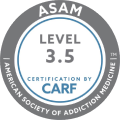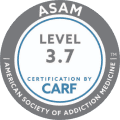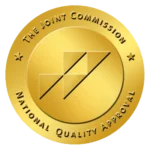Dr. Ignatov – TMS Therapy [00:00:00] Hi, I’m Dr. Ignatov. I’m a board certified psychiatrist and addiction medicine physician. Depression is a very common mental health issue in the United States, especially alongside addictive behaviors. In fact, around 21 million of American adults struggle with major depression. Some have treatment resistant depression, a condition that does not respond or improve with common types of treatments such as psychotherapy or antidepressant. While treating this type of depression can be challenging, there are effective alternatives to help manage symptoms and improve quality of life. Transcranial magnetic stimulation or T M S therapy is one of the best options to explore this proven treatment option is fairly new in the field of mental healthcare, but it produces positive and long term results with few to no side effects. Here is what you must know about tms. T M s treatments [00:01:00] were approved by US full and drug administration or FDA in 2008 to treat different types of mental illnesses. T M S therapy is an effective treatment option that helps individuals ease their symptoms of treatment resistant depression. When someone does not respond well to medications and therapy, TMS therapy is the next best option to give a try. When used in combination with antidepressants and behavioral therapy, its effectiveness can create even more significant improvement. What is TMS therapy? Transcranial magnetic stimulation or TMS is an effective treatment for conditions like major depressive disorder or M D D treatment, resistant depression, or T R D. Obsessive compulsive disorder or O C D as well as smoking cessation, migraine headaches. During the TMS session, your healthcare provider places a magnetic coil against the [00:02:00] forehead or scalp of the person, and this coil sense and magnetic. Pulse that activates neurons in specific areas of the brain. TMS technician administers pulses one after the other in rapid succession. And using this strategy releases neurotransmitters such as dopamine and serotonin, and this neurotransmitters work to ease the symptoms of depression. The magnetic pulses are of the same type and strength as those submitted by an mri. And the person will not feel this pulses and should not feel any pain. T M S therapy is non-invasive, which means that it does not involve any sedation or anesthesia. The patient remains awake and alert throughout the session. Side effects such as tiredness, sexual dysfunction, weight gain, which are often experienced, uh, by patients with antidepressants. They did not occur with T M S therapy and there is no [00:03:00] recovery time either. A patient can drive back home after the therapy session and continue with their normal activities. TMS therapy is effective. 50 to 60% of those with depression who have tried and failed to benefit from antidepressant medications, experience the clinically meaningful response with tms. In one third of these people get full remission, which means that their symptoms go away entirely. However, most patients feel better for many months after treatment is stopped with the average response lasting a little more than a. TMS therapies, targeted magnetic pulses do not directly affect the whole brain. Rather, these pulses reach around two to three centimeters into the brain, right under the magnetic treatment coil, and the magnetic field is targeted on the left dorsal lateral prefrontal cortex, which is part of the brain responsible for [00:04:00] mood control. TMS therapy is fast. Each TMS session lus. 20 to 30 minutes and the complete course of treatment will typically last four to six weeks, five days each. During the TMS treatment session, the patient seats in a comfortable chair while the TMS coil is properly placed on the forehead and while the policies are being sent to the brain, patients can listen to music, watch tv, and talk to the staff if they want, or if they’re comfortable, they can have a loved one present in the room during their. After the treatment sessions, patient will feel just like their normal selves. They will be able to drive back home and continue their daily life. Some people report feeling tired or having a mild headache, although this is normally goes away after a week or two. Other people may report improved energy and focus as well as their ability to deal [00:05:00] with anxious thoughts after treatment. TMS therapy is support. It is often used to help other treatments to improve symptoms of depression. While many patients seek TMS therapy because antidepressants are ineffective on their own, combining the two types of treatment can improve the results of each. And your Dr. May advise you to continue taking antidepressants after completing TMS treatment to sustain positive results. If you have treatment resistant depression or T R D, these two treatment options can help you find. Likewise. Many patients who seek treatment for depression undergo some sort of behavioral therapy to address the root cause of their condition. Some people get depression as a result of chemical imbalance in the brain while others develop depression as a result of trauma or environment. Uh, and therapy helps people address this issues and use good coping skills [00:06:00] to enhance their mood, and it can also lead to a long-term improvement when used with TMS together. Ka. Ketamine is a medication often used to treatment to treat treatment resistant depression or T r D and T m s treatment and ketamine, uh, whether it’s injectable form or it’s oral lozenges, or it’s a nasal spray, can be used together to help those who are suffering from depression. Some people who combine these two treatments enjoy rapid relief from symptoms, which, uh, with very few required sessions, it makes the combination of TMS therapy with ketamine the best treatment option for people suffering from mild to severe depression. Combining TMS therapy with other treatments can help you find relief from your symptoms faster, especially if you have G R D. Treatment resistant depression, and it can also help you keep your relief for a longer time if you believe therapy and medication are [00:07:00] insufficient now, that TMS would be an option for your depression. TMS is also been researched widely across disorders in the hopes that it will evolve into a new treatment for neurological disorders, uh, anxiety, chronic pain, P T D and substance use disorders, or a. T M S therapy has already been shown to be a safe and effective treatment option for those suffering from mild to severe depression. If you are considering T M S treatment, rest assured that you’ll get the safe effective treatment here at the recovery team.
In the United States, around 21 million adults struggle with major depression. Some of these people have treatment-resistant depression, a condition that does not respond or improve with common types of treatment such as psychotherapy or antidepressants.
While treating this type of depression can be challenging, there are effective options to help manage symptoms and improve quality of life.
Transcranial magnetic stimulation (TMS) therapy is the best option for you to explore. This treatment option is fairly new in the field of mental health care. But it produces positive and long-term results with few to no side effects.
Key Takeaways
Depression is a common mental health issue in the US. With TMS therapy, it is possible to see a significant reduction in symptoms of depression.
Here is what you must know about TMS therapy:
- When someone doesn’t respond well to medications and therapy, TMS therapy is the best option to try.
- TMS therapy is the most effective treatment option for individuals with treatment-resistant depression.
- The US Food and Drug Administration (FDA) approved TMS treatment in 2008 to treat different mental illnesses.
- When used in combination with antidepressants and behavioral therapy, TMS efficacy sees a significant improvement.
Contact The Recovery Team to overcome depression. Call (800) 817-1247 to learn more about our admission process.
TMS Therapy
For those people and many others who do not respond well to therapy and medications alone, there is a newer effective treatment option known as transcranial magnetic stimulation (TMS).
TMS therapy was FDA-approved in 2008 as an effective, non-invasive treatment for the following conditions:
- Major depressive disorder (MDD)
- Treatment-resistant depression (TRD)
- Obsessive-compulsive disorder (OCD)
- Smoking cessation
- Migraines
During a TMS session, a healthcare provider places a magnetic coil against the forehead or scalp of the person. This coil sends a magnetic pulse that passes through the skull, activating neurons in specific areas of the brain.
A TMS technician administers pulses one after the other in rapid succession. Using this strategy releases neurotransmitters such as dopamine and serotonin. These neurotransmitters work to ease the symptoms of depression.
The magnetic pulses are of the same type and strength as those emitted by an MRI machine. The person will not feel these pulses and should not cause pain.
TMS Therapy Is Non Invasive
TMS therapy is non-invasive, which means that it does not involve sedation or anesthesia, as the patient remains awake and alert throughout the session.
Side effects (such as tiredness, sexual dysfunction, and weight gain) often experienced with antidepressants do not occur with TMS therapy.
There is no recovery time either; patients can drive back home after the therapy session and continue their everyday activities.
TMS Therapy Is Non-Systemic
TMS therapy is non-systemic, which means that it is not taken by mouth and does not circulate in the bloodstream throughout the body.
TMS Therapy Is Effective
Around 50 to 60 percent of those with depression who have tried and failed to benefit from antidepressant medications experience a clinically meaningful response with TMS.
One-third of patients get full remission, meaning their symptoms go away entirely. It is also important to note that these positive results are not permanent.
However, most TMS patients feel better for many months after treatment is stopped, with the average response lasting a little more than a year.
For those who do not respond well to TMS, electroconvulsive therapy (ECT) may still be effective and is often worth exploring.
TMS Therapy Is Targeted
Magnetic pulses do not directly affect the whole brain. Rather, these pulses reach around 2-3 centimeters into the brain right under the magnetic treatment coil.
The magnetic field is targeted at the left dorsolateral prefrontal cortex (DLPFC), which is the part of the brain responsible for mood control.
How a TMS Session Works
During a TMS treatment session, the patient sits in a comfortable chair while the TMS coil is properly placed on the head. After placing the headpiece, magnetic pulses are sent to the prefrontal cortex.
While the pulses are being sent to the brain, patients can listen to music, watch TV, and talk to the staff. If they want or are comfortable, they can have a loved one in the room during their session.
Each session lasts around 20-30 minutes. The complete course of treatment will typically last four to six weeks, with five days each week.
After the treatment sessions, patients will feel just like their usual selves. They will be able to drive back home and continue their daily life.
Some people report feeling tired or having a mild headache, although this normally goes away after a week or two. Others report improved energy and focus, as well as the ability to deal with anxious thoughts after treatment.
Using TMS Therapy With Other Depression Treatments
TMS therapy is often used in conjunction with other treatments to improve symptoms of depression. TMS can be used with the following treatments:
Medication
While many patients seek TMS therapy because antidepressants are ineffective on their own, combining the two types of treatment can improve the efficacy of each.
Your doctor may advise you to continue taking antidepressants after completing TMS treatment to sustain positive results. If you have TRD, these two treatment options can help you find relief.
Therapy
Many patients who seek treatment for depression undergo some sort of behavioral therapy to address the root cause of their condition.
Some people develop depression due to a chemical imbalance in the brain. In contrast, others develop depression as a result of their trauma or environment.
Therapy helps people address these issues and use good coping skills to enhance their mood. It can also lead to long-term improvements when used in conjunction with TMS.
Ketamine
Ketamine is a medication often used to treat treatment-resistant depression (TRD). TMS treatment and ketamine injections can be used together to help those suffering from depression.
Some people who combine these two treatments enjoy rapid relief from symptoms with fewer required sessions. It makes combining TMS therapy with ketamine injections the best treatment option for people suffering from mild to severe treatment-resistant depression.
Combining TMS therapy with other treatments can help you find relief from your symptoms faster, especially if you have TRD.
If you believe therapy and medication are insufficient, speak with your doctor about your options.
Candidates for TMS Therapy
Depression is a mental condition that can be challenging to manage. The first-line treatment for depression is typically a mix of medication and therapy.
However, in some cases, this combination does not improve the symptoms, and the person is diagnosed with treatment-resistant depression (TRD).
People who have TRD or cannot take medications for other reasons are good candidates to receive TMS treatment.
Ineligible for TMS Therapy
TMS is not suitable for patients with epilepsy, brain tumors, brain injuries, a family history of seizures, psychosis, or drug and alcohol addiction.
Because TMS uses magnetic pulses, those with metal in their necks or heads cannot receive TMS, except for braces or dental fillings.
Examples of metal objects that preclude you from receiving TMS treatment include:
- Stents
- Aneurysm clips
- Metallic ear
- Pacemakers
- Deep brain stimulators
- Eye implants
- Bullet fragments
Side Effects of TMS Therapy
As with any procedure, there are a few side effects of TMS stimulation. Some of the side effects associated with TMS include:
Common Side Effects
Side effects are generally mild to moderate in nature. These effects improve shortly after the TMS sessions and lessen with additional sessions.
The most common side effects include:
- Headaches
- Tingling
- Twitching of facial muscles
- Nausea
- Anxiety
- Scalp discomfort at the site of stimulation
To reduce effects, your doctor may change the intensity of stimulation or advise you to take a painkiller before the procedure.
Rare Side Effects
Serious side effects are rare and may include the following:
- Seizures
- Hearing loss (if there is improper ear protection during treatment)
- Mania, common among people with bipolar disorder
Future of TMS Therapy
TMS is being researched widely across disorders in the hopes that it will evolve into a new treatment for neurological disorders, pain management, and substance addiction.
TMS for the following conditions is not yet approved by FDA and would be termed “off-label.”
- Anxiety disorder
- Adolescent depression
- Borderline personality disorder (BPD)
- Chronic pain
- Schizophrenia
- Post-traumatic stress disorder (PTSD)
- Sleep disorders
- Addictions
Frequently Asked Questions (FAQ)
What does TMS therapy do?
TMS is a safe, non-invasive treatment that uses a series of short magnetic pulses to activate nerve cells in parts of the brain known to be related to major depression.
Because repetitive magnetic pulses are delivered, this treatment for depression is also referred to as repetitive TMS (rTMS).
Studies have shown that repeated TMS is twice as effective as antidepressants and talk therapy in treating serious symptoms of depression.
What are the dangers of TMS therapy?
Side effects of TMS are uncommon. If they do occur, they may include the following:
Headache (most common)
Scalp discomfort
Twitching of the facial muscles
Skin redness at the site coil placement
Dizziness
Sleepiness
A higher-than-usual sensitivity to sound
Seizures (very rare)
What does TMS do to your brain?
TMS is a non-invasive treatment option that uses magnetic fields to activate nerve cells in the brain in order to ease the symptoms of depression.
A magnetic coil is placed on your scalp or forehead during a TMS session. The electromagnet delivers a magnetic pulse painlessly that activates nerve cells in the area of the brain involved in mood regulation and depression.
TMS treatment is thought to stimulate brain areas that have reduced activity in depression.
What is the success rate of TMS therapy?
Many patients considering TMS therapy want to know their chances of success and what they can expect from undergoing the procedure.
TMS provides a clinically meaningful response to around 50 to 60 percent of people suffering from depression who have tried and failed to gain benefits from medications. One-third of these people get full remission, meaning their symptoms go away completely.
If TMS fails, ECT therapy could be the best option. Those who have tried TMS therapy should consult with a medical expert regarding ECT therapy.
Get Effective Treatment for Depression at The Haven Detox
Depression can take a significant toll on your health and quality of life. But this is not something to get discouraged about as you can overcome it and any other mental health condition.
TMS therapy is a safe and effective treatment for mild to severe depression.
If you are considering TMS treatment, you can rest assured that you will get the safest and most effective treatment possible at The Recovery Team.
Along with TMS therapy, The Haven Detox also offers a number of other evidence-based therapies, including cognitive-behavioral therapy (CBT), dialectical behavior therapy (DBT), eye movement desensitization and reprocessing (EMDR), and many more.
Our medical staff has the tools and knowledge to perform the procedure effectively and help you find relief as soon as possible.
Patients also respond well to the dynamic menu of treatments we offer, which includes inpatient treatment, outpatient treatment, intensive outpatient, partial hospitalization programs (PHP), and more.
Therefore, if you are ready to defeat depression and improve the quality of your life, contact us today at (800) 817-1247.






